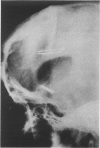Abstract
A study of the results of some 660 cases of stereotactic tractotomy shows that these have been consistent through a 12-year period, more than 50% of cases of resistant depression can be set free of medical care and another 25% at least can be improved. Comparable results are also obtained in obsessional illness and anxiety states, particularly those in which there is a depressive component.
The original localization of the target site described in 1964 has not required modification but pathological studies and anatomical research has revealed new features concerning the anatomical connections affected by this operation.
The lesion beneath the head of the caudate nucleus does not extend quite so far as the substantia innominata and should therefore be called subcaudate tractotomy. Connections from the anterior cingulate region and posterior orbital cortex are severed at this site but amygdalo-hypothalamic fibres are not interrupted directly, however; the projection from the amygdala to the dorsal median nucleus sends a radiation to the posterior orbital cortex which is divided here. In addition, important projections from frontal cortex to hypothalamus which bring the external milieu into association with the limbic system pass downwards through the target area beneath the head of the caudate nucleus and are also divided at this point, the localized lesion, therefore, produces a marked effect upon fibres which are concerned in emotional activity. The wellnigh specific effect in cases of depression raises the question whether the operation acts by modifying the intensity of emotional reactivity through limbic connections or has a more specific effect upon the cause of abnormal reactivity through fronto-hypothalamic connections exerting an influence on monoamine production in the hypothalamus.
Full text
PDF
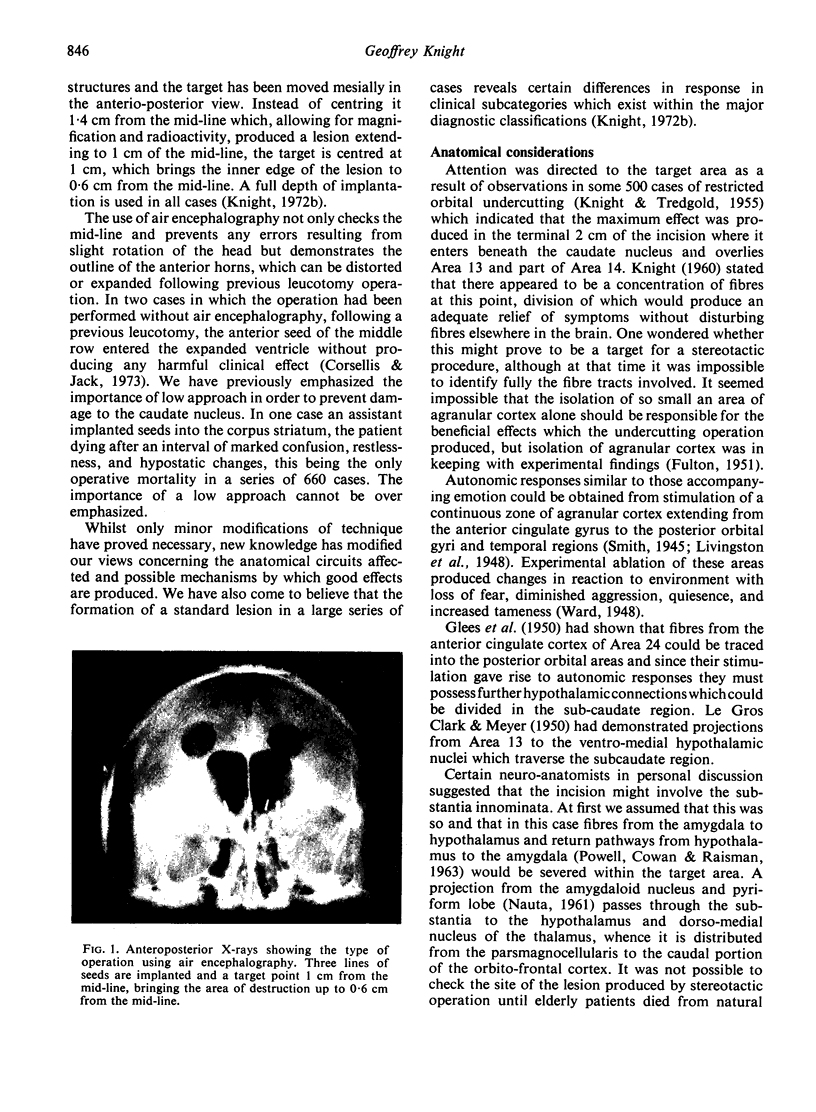

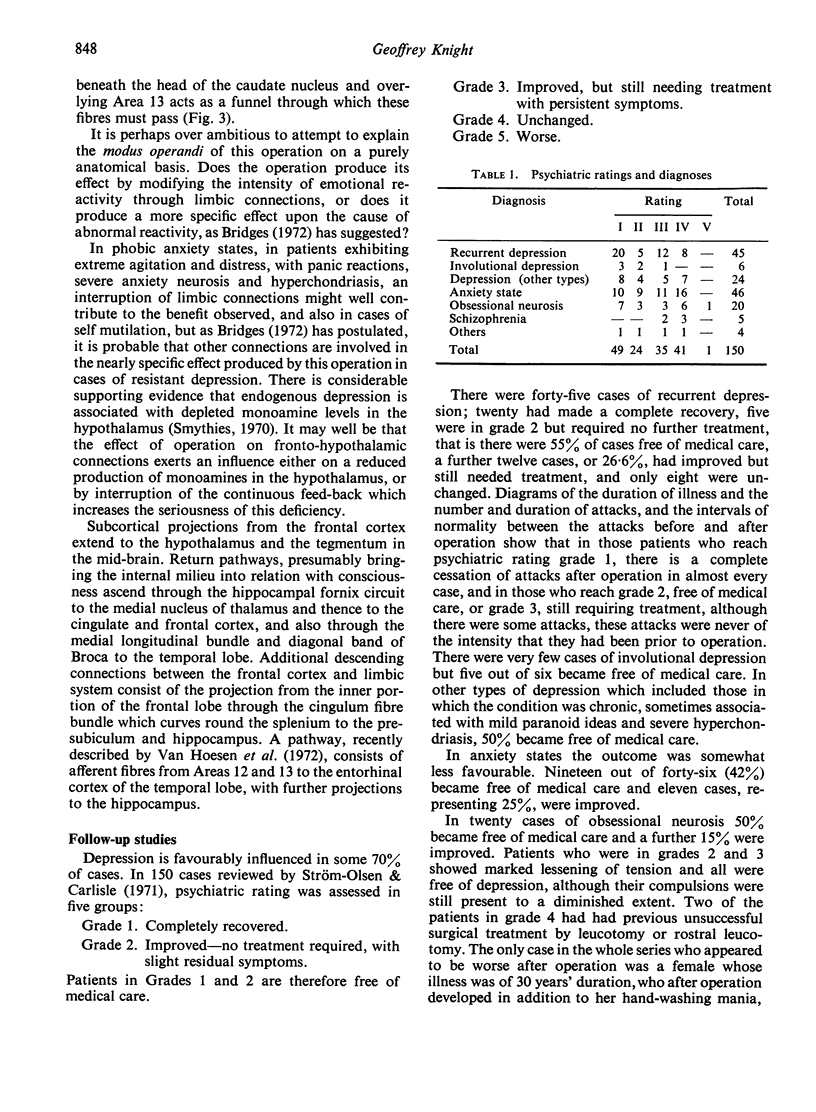
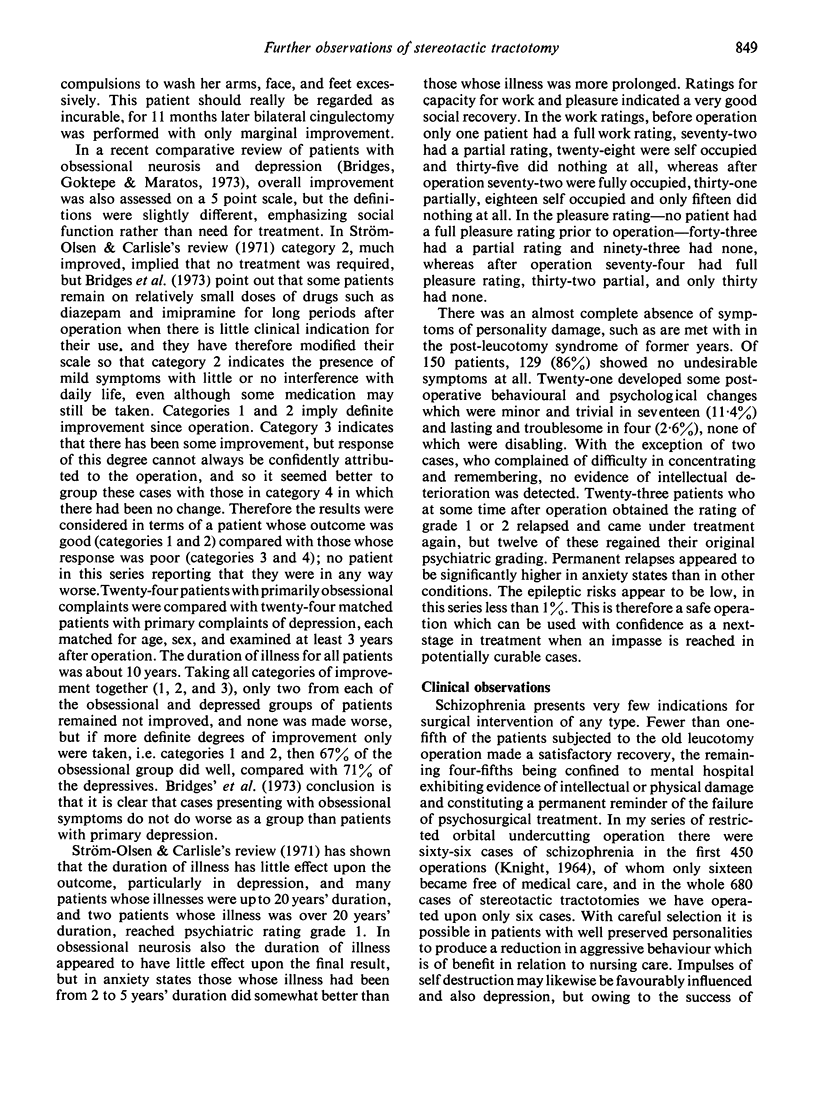
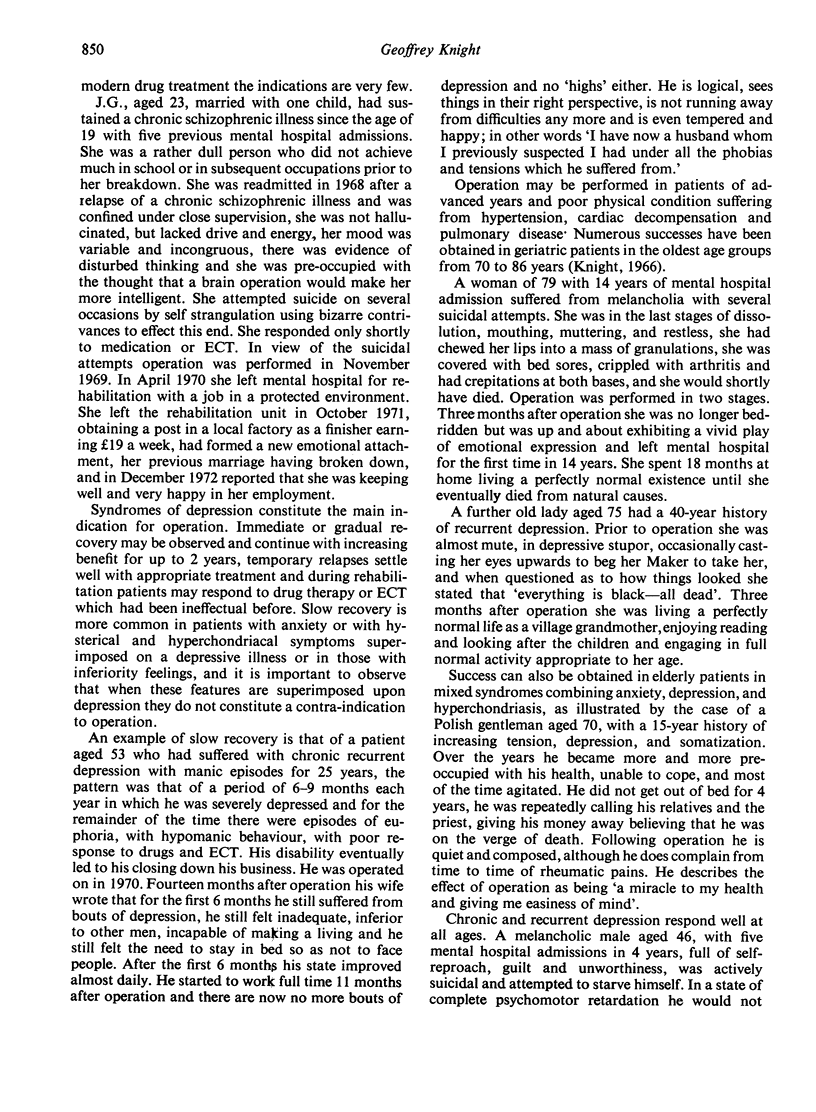
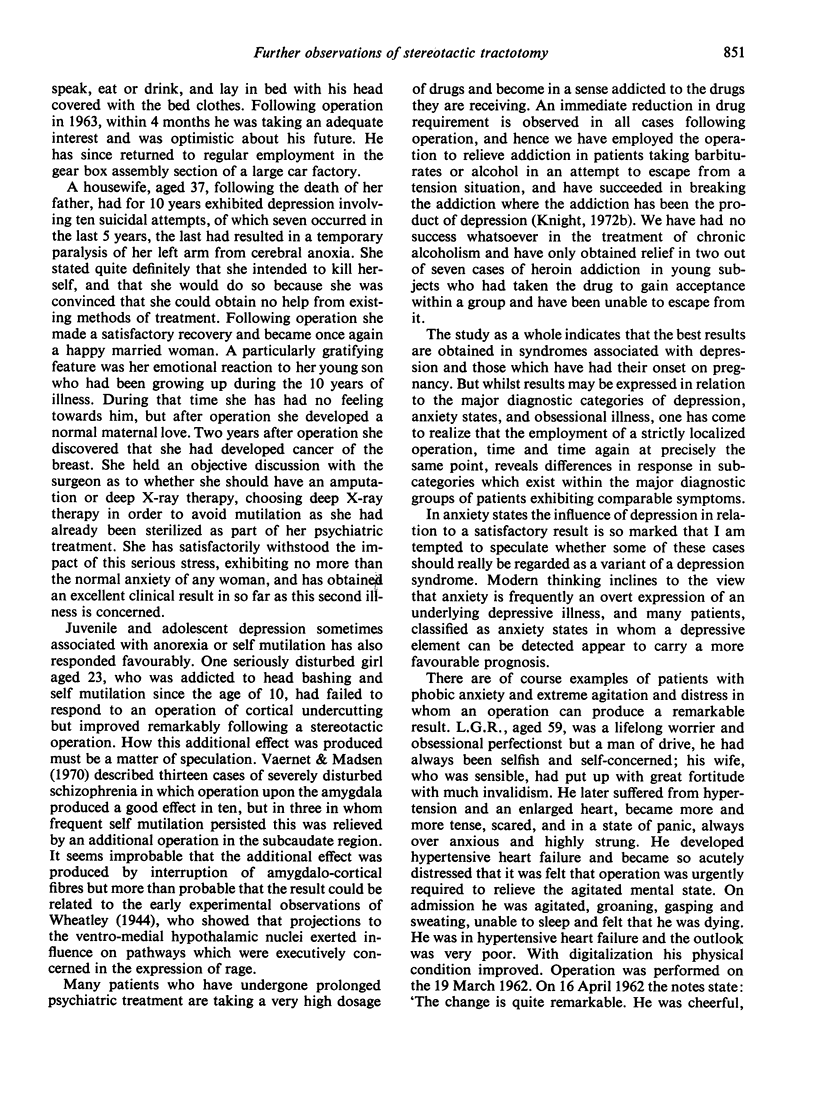
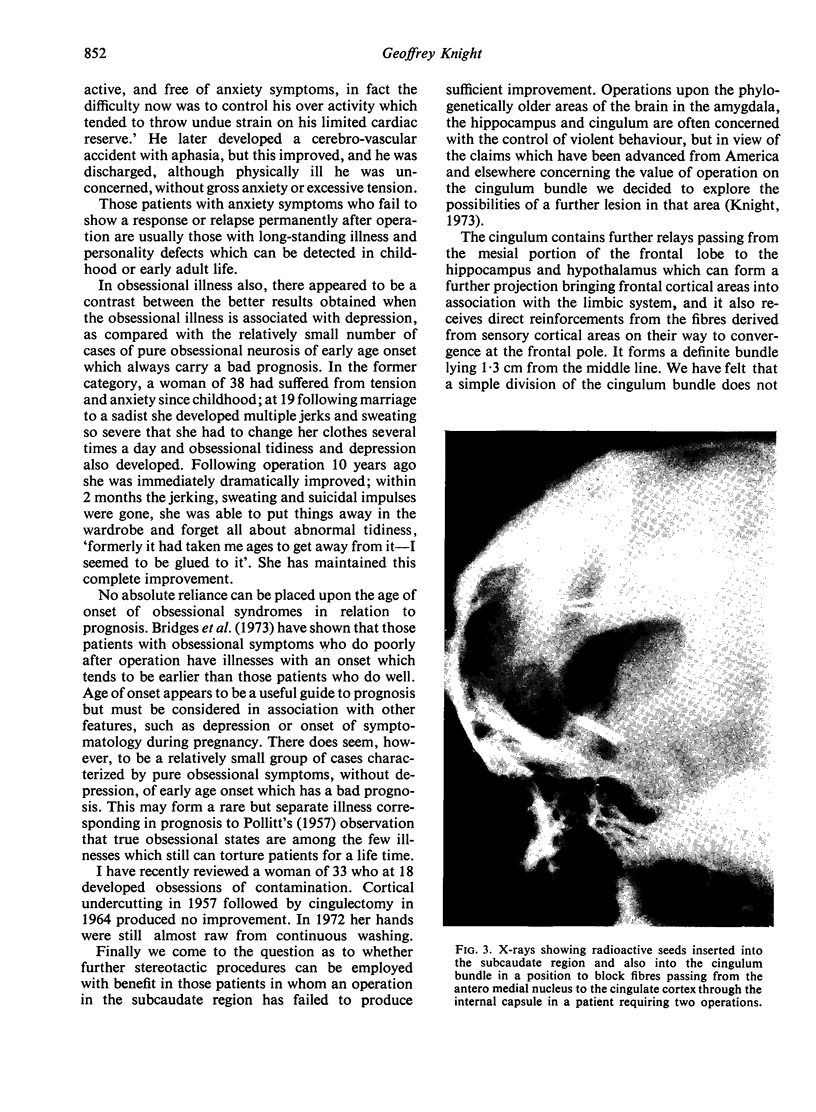
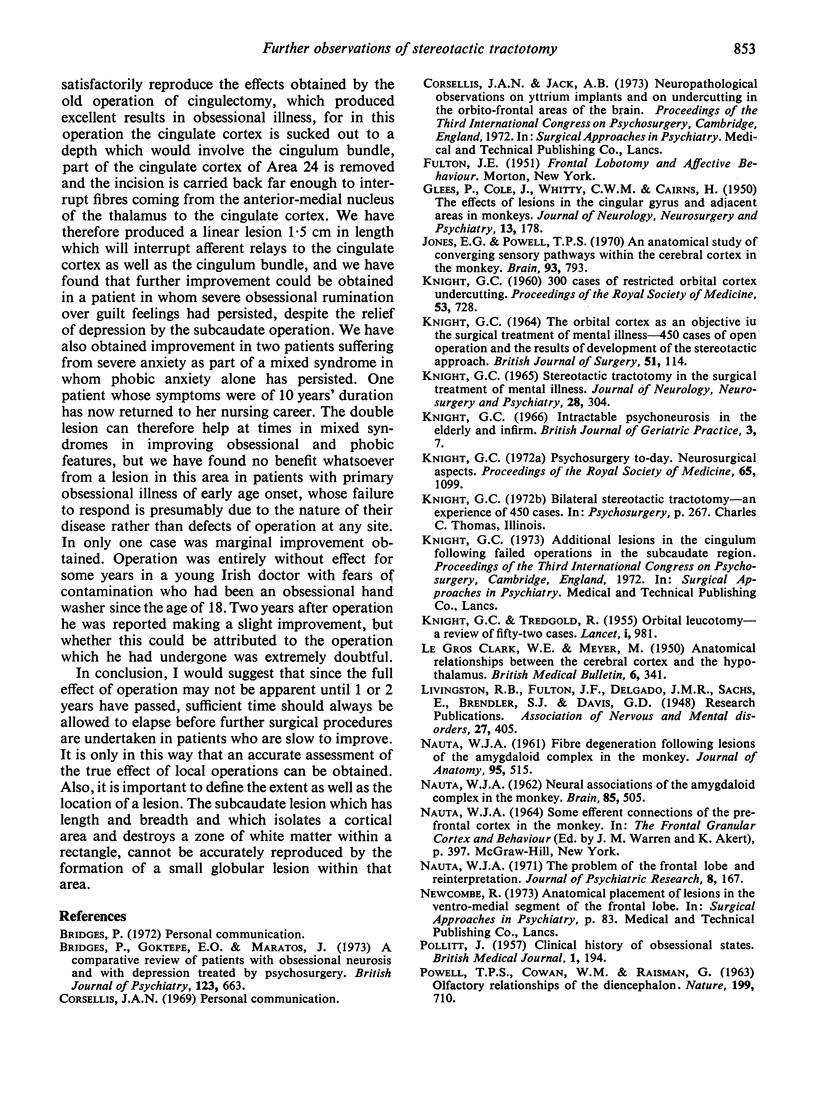

Images in this article
Selected References
These references are in PubMed. This may not be the complete list of references from this article.
- Bridges P. K., Goktepe E. O., Maratos J. A comparative review of patients with obsessional neurosis and with depression treated by psychosurgery. Br J Psychiatry. 1973 Dec;123(577):663–674. doi: 10.1192/bjp.123.6.663. [DOI] [PubMed] [Google Scholar]
- CLARK W. E. Le G., MEYER M. Anatomical relationships between the cerebral cortex and the hypothalamus. Br Med Bull. 1950;6(4):341–345. doi: 10.1093/oxfordjournals.bmb.a073627. [DOI] [PubMed] [Google Scholar]
- GLEES P., COLE J., WHITTY C. W. M., CAIRNS H. The effects of lesions in the cingular gyrus and adjacent areas in monkeys. J Neurol Neurosurg Psychiatry. 1950 Aug;13(3):178–190. doi: 10.1136/jnnp.13.3.178. [DOI] [PMC free article] [PubMed] [Google Scholar]
- Jones E. G., Powell T. P. An anatomical study of converging sensory pathways within the cerebral cortex of the monkey. Brain. 1970;93(4):793–820. doi: 10.1093/brain/93.4.793. [DOI] [PubMed] [Google Scholar]
- KNIGHT G. C., TREDGOLD R. F. Orbital leucotomy; a review of 52 cases. Lancet. 1955 May 14;268(6872):981–986. doi: 10.1016/s0140-6736(55)91963-2. [DOI] [PubMed] [Google Scholar]
- KNIGHT G. 330 cases of restricted orbital cortex undercutting. Proc R Soc Med. 1960 Sep;53:728–732. [PubMed] [Google Scholar]
- KNIGHT G. STEREOTACTIC TRACTOTOMY IN THE SURGICAL TREATMENT OF MENTAL ILLNESS. J Neurol Neurosurg Psychiatry. 1965 Aug;28:304–310. doi: 10.1136/jnnp.28.4.304. [DOI] [PMC free article] [PubMed] [Google Scholar]
- KNIGHT G. THE ORBITAL CORTEX AS AN OBJECTIVE IN THE SURGICAL TREATMENT OF MENTAL ILLNESS. THE RESULTS OF 450 CASES OF OPEN OPERATION AND THE DEVELOPMENT OF THE STEREOTACTIC APPROACH. Br J Surg. 1964 Feb;51:114–124. doi: 10.1002/bjs.1800510207. [DOI] [PubMed] [Google Scholar]
- Knight G. Neurosurgical aspects of psychosurgery. Proc R Soc Med. 1972 Dec;65(12):1099–1104. doi: 10.1177/003591577206501222. [DOI] [PMC free article] [PubMed] [Google Scholar]
- NAUTA W. J. Fibre degeneration following lesions of the amygdaloid complex in the monkey. J Anat. 1961 Oct;95:515–531. [PMC free article] [PubMed] [Google Scholar]
- NAUTA W. J. Neural associations of the amygdaloid complex in the monkey. Brain. 1962 Sep;85:505–520. doi: 10.1093/brain/85.3.505. [DOI] [PubMed] [Google Scholar]
- Nauta W. J. The problem of the frontal lobe: a reinterpretation. J Psychiatr Res. 1971 Aug;8(3):167–187. doi: 10.1016/0022-3956(71)90017-3. [DOI] [PubMed] [Google Scholar]
- POLLITT J. Natural history of obsessional states; a study of 150 cases. Br Med J. 1957 Jan 26;1(5012):194–198. doi: 10.1136/bmj.1.5012.194. [DOI] [PMC free article] [PubMed] [Google Scholar]
- POWELL T. P., COWAN W. M., RAISMAN G. OLFACTORY RELATIONSHIPS OF THE DIENCEPHALON. Nature. 1963 Aug 17;199:710–712. doi: 10.1038/199710b0. [DOI] [PubMed] [Google Scholar]
- Ström-Olsen R., Carlisle S. Bi-frontal stereotactic tractotomy. A follow-up study of its effects on 210 patients. Br J Psychiatry. 1971 Feb;118(543):141–154. doi: 10.1192/bjp.118.543.141. [DOI] [PubMed] [Google Scholar]
- Vaernet K., Madsen A. Stereotaxic amygdalotomy and basofrontal tractotomy in psychotics with aggressive behaviour. J Neurol Neurosurg Psychiatry. 1970 Dec;33(6):858–863. doi: 10.1136/jnnp.33.6.858. [DOI] [PMC free article] [PubMed] [Google Scholar]
- Van Hoesen G. W., Pandya D. N., Butters N. Cortical afferents to the entorhinal cortex of the Rhesus monkey. Science. 1972 Mar 31;175(4029):1471–1473. doi: 10.1126/science.175.4029.1471. [DOI] [PubMed] [Google Scholar]





